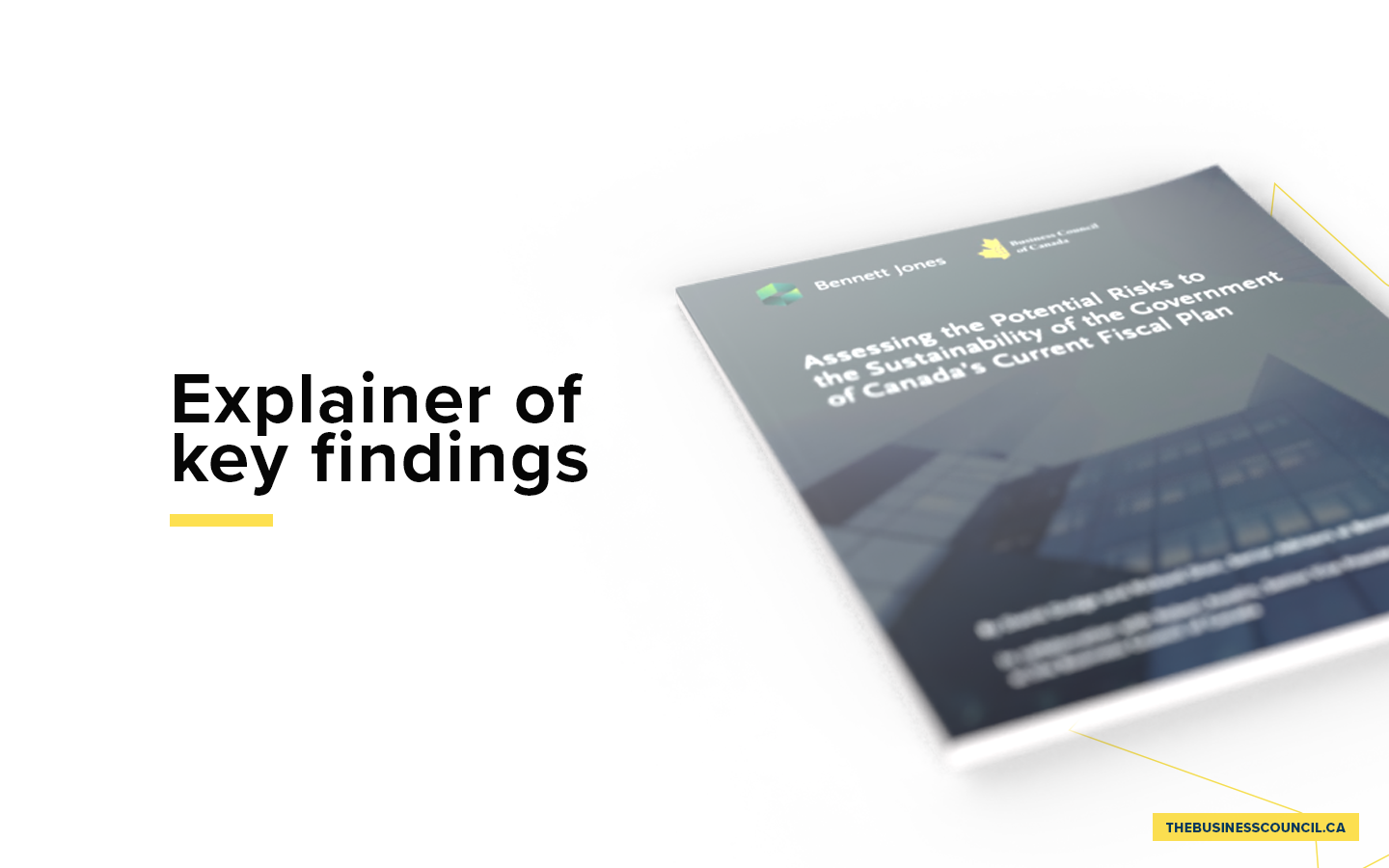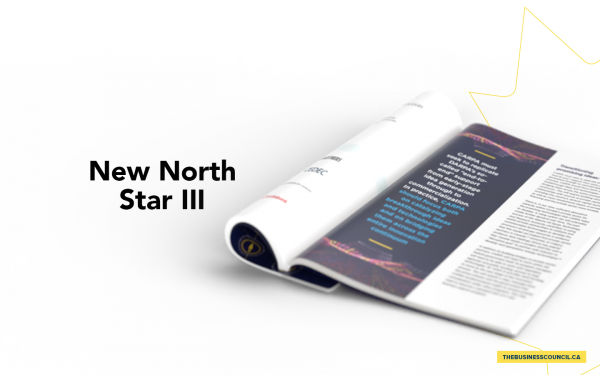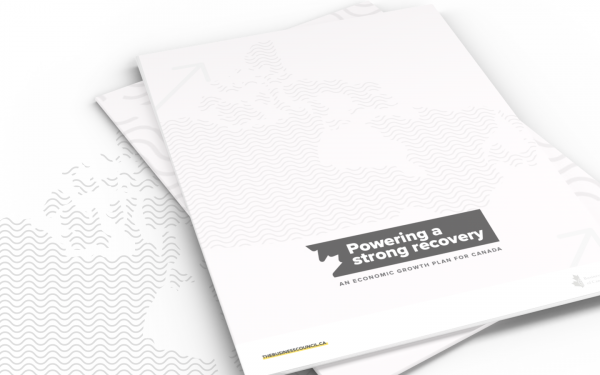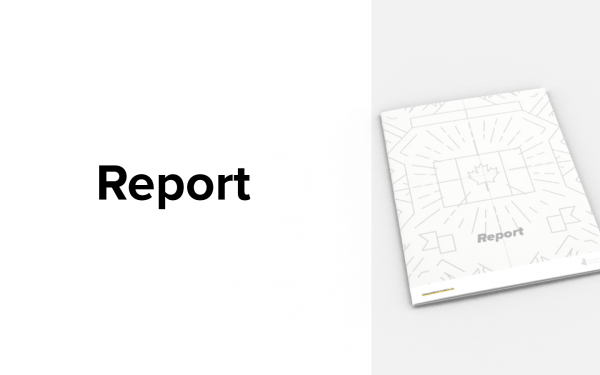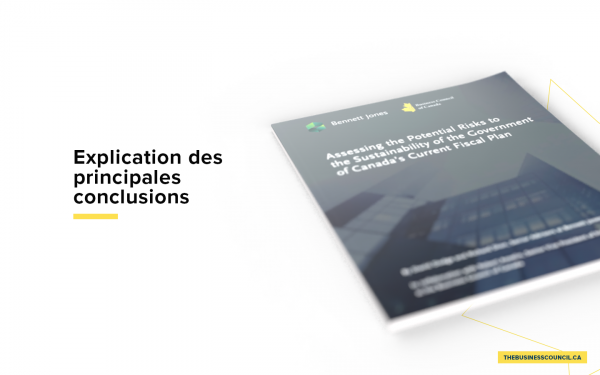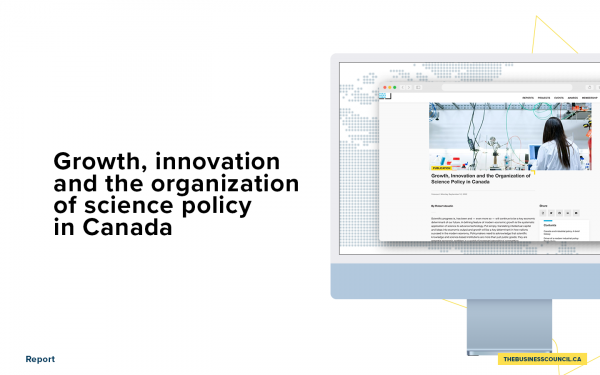Assessing the Potential Risks to the Sustainability of the Government of Canada’s Current Fiscal Plan
Explainer of key findings
Context
In 2020, the Government of Canada dramatically increased spending in an effort to protect Canadians from the worst economic effects of the COVID-19 pandemic. Important as these measures were at the time, this expansionary fiscal policy resulted in a massive deficit of $328 billion in fiscal year (FY) 2020-21 and a net debt/GDP ratio that ballooned to 52% – the highest level this century and dramatically higher than the roughly 35% ratio achieved on average since the Great Financial Crisis of 2008. According to the 2022 Fall Economic Statement (FES), the federal government debt is projected to reach $1.177 trillion on March 31st 2023 (Table A1.5, FES), from $685.5 billion three years earlier (Table 1, Debt Management Report 2018-19).
When preparing budgets, the government must consider fiscal sustainability and debt servicing. In this context, the government’s current fiscal plan may not tell the full story of the country’s financial path.
The importance of fiscal anchors
Fiscal anchors serve as notional ceilings or caps to the levels of public spending, deficits, and debt that governments are prepared to reach in their fiscal policy. They serve many purposes including:
- Retaining the confidence of lenders and global markets (i.e., credit access at favourable rates);
- Establishing a positive investment climate for businesses;
- Providing a measure of fiscal discipline inside government;
- Ensuring that the government can respond to future economic shocks and unforeseen crises.
The Debt-to-GDP anchor versus the Interest Cost-to-Revenue anchor
Two different ratios – net debt/GDP and interest cost/revenue – provide useful indicators of the future economic and political sustainability of a government’s access to capital markets and hence the sustainability of its public finances.
There is no precise number for either of these ratios above which the government’s public finances become unsustainable and access to capital markets problematic. A common assumption about deficits is that as long as interest rates (i.e. bond rates on rollover debt) stay lower than GDP growth, the debt-to-GDP ratio won’t get out of control and overall debt will continue to be manageable. The problem, of course, is that when interest rates rise, debt servicing costs become significantly more expensive to finance.
An interest cost/revenue ratio above 10% and a federal debt/GDP ratio that is not declining steadily from close to the 50% where it currently stands signal risks of unsustainability. At the same time, to be useful, these indicators must be calculated on a forward-looking basis grounded on realistic assumptions. If we’ve learned anything from the past few years, it’s that the future is unpredictable and fiscal plans must consider the uncertain evolution of changing economic and geopolitical circumstances.
The purpose of this paper
The paper “Assessing the Potential Risks to the Sustainability of the Government of Canada’s Current Fiscal Plan” explores the way two fiscal anchors – the debt/GDP ratio and the interest cost/revenue ratio – are likely to evolve from now until 2032-33. Using five plausible economic scenarios the paper assesses the implications of these two anchors as a guide to sustainable fiscal policy actions.
The analysis begins with a base scenario which incorporates the spending and tax policies as well as the economic assumptions set out in the federal government’s 2022 Fall Economic Statement (FES 2022).
The paper then examines the evolution of the two fiscal ratios under four alternative scenarios:
- Increased spending relative to the base scenario from 2024 onwards;
- A full-blown recession in 2023;
- Lower supply resulting in permanently higher interest rates;
- A combination of these three scenarios: a recession in 2023 with lower supply in the medium term and increased spending all the way through.
The risks to the federal government’s current fiscal and economic assumptions
As the different scenarios suggest, there are three main risks to the current fiscal and economic assumptions of the federal government:
- A risk that the government’s current planned spending assumptions, on a per capita basis, are being underestimated to deliver the policy goals it has set out. The authors estimate that to maintain real program spending per capita at the 2023-24 level until 2027-28, $60 billion of additional program spending relative to FES 2022 would need to be added to the fiscal framework;
- A risk that it will not be possible to get the inflation rate down to 2% by the end of 2024 without higher policy interest rates in 2023 and hence a deeper recession that year,
- A risk that supply constraints become a permanent feature of the global and Canadian economies, implying higher interest rates on an ongoing basis.
The authors observe that not one of these three risks to the base scenario is likely to occur alone without one or both of the other risks also emerging.
Debt/GDP versus Interest Cost/Revenue under five federal budget scenarios
| Base | Increased spending | Recession in 2023 | Constrained supply | Increased spending + Recession + Constrained supply | ||||||
|---|---|---|---|---|---|---|---|---|---|---|
| Debt/GDP (%) | Interest Cost/Revenue (%) | Debt/GDP (%) | Interest Cost/Revenue (%) | Debt/GDP (%) | Interest Cost/Revenue (%) | Debt/GDP (%) | Interest Cost/Revenue (%) | Debt/GDP (%) | Interest Cost/Revenue (%) | |
| 2022-23 | 46.0 | 7.8 | 46.0 | 7.8 | 46.7 | 7.8 | 46.0 | 7.8 | 46.7 | 7.8 |
| 2023-24 | 46.0 | 9.4 | 46.0 | 9.4 | 49.9 | 10.4 | 46.0 | 9.4 | 49.9 | 10.4 |
| 2024-25 | 45.3 | 8.8 | 45.5 | 8.9 | 50.0 | 10.0 | 45.6 | 9.0 | 50.3 | 10.1 |
| 2025-26 | 44.2 | 8.6 | 44.7 | 8.9 | 49.2 | 10.0 | 44.9 | 9.3 | 50.1 | 10.4 |
| 2026-27 | 42.7 | 8.4 | 43.9 | 8.9 | 47.9 | 10.0 | 43.9 | 9.6 | 49.9 | 10.7 |
| 2027-28 | 41.2 | 9.2 | 43.2 | 10.0 | 46.7 | 11.2 | 43.1 | 10.8 | 49.9 | 12.3 |
| 2032-33 | 35.1 | 8.6 | 40.7 | 10.2 | 42.4 | 10.5 | 39.8 | 11.6 | 51.2 | 14.1 |
The implications
The analysis suggests there is a significant risk that both the debt ratio and the interest cost ratios exceed comfortable levels over the remainder of this decade, both because economic conditions will turn out to be more difficult than assumed in the FES 2022 and because the spending budgeted will turn out to be insufficient to achieve the policy goals promised. In all four alternative scenarios the authors put forward in this paper, the 10% interest cost/revenue anchor gets reached over the next decade.
All things being equal, the more the government takes from its revenues to finance its debt, the less it has to finance crucial services and social programs for Canadians, or transfers to provinces for programs such as health care and education.





